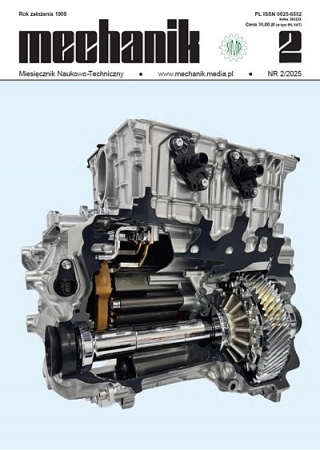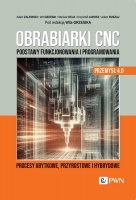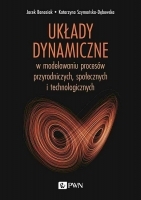Koncepcja badania symulacji wrażenia dotyku wirtualnych obiektów z wykorzystaniem techniki VR
Concept research on simulation of sense of haptics using vr technology
Mechanik nr 07/2015 - Artykuły z XIX Międzynarodowej Szkoły Komputerowego Wspomagania Projektowania, Wytwarzania i Eksploatacji zamieszczone płycie CD
STRESZCZENIE: W artykule przedstawiono koncepcję przeprowadzenia badań eksperymentalnych w aspekcie symulowania wrażenia dotyku związanego z manipulowaniem rzeczywistymi i wirtualnymi elementami sterowniczymi. Badania te pozwolą na określenie, które czynności związane z użytkowaniem maszyn do obróbki metalu można prowadzić z wykorzystaniem uproszczonego sposobu symulowania wrażenia dotyku (za pomocą wirtualnych elementów sterowniczych), a które z wykorzystaniem rzeczywistych elementów. W opracowanej koncepcji zawarto również wytyczne odnośnie do budowanego stanowiska badawczego obejmującego rękawicę z siłowym sprzężeniem zwrotnym oraz symulator wyposażony w fizyczne modele rzeczywistych elementów sterowniczych. Badania przeprowadzone zostaną z wykorzystaniem techniki VR.
SŁOWA KLUCZOWE: symulator, wrażenie dotyku, rzeczywistość wirtualna (VR).
ABSTRACT: The article presents a concept of experimental research on simulation of sense of touch concerning manipulating real as well as virtual steering elements. The research will allow to define which actions connected with using metalworking machines may be carried out using simplified method of haptic simulation (with use of virtual steering elements) and which ones require real elements. The concept also includes indications on a research point being built, which includes a force feedback data glove as well as a simulator equipped with physical models of real steering elements. The research will be conducted using VR technique.
KEYWORDS: simulator, sense of touch, virtual reality (VR).
BIBLIOGRAFIA / BIBLIOGRAPHY:
- Grabowski A.: Wykorzystanie współczesnych technik rzeczywistości wirtualnej i rozszerzonej do szkolenia pracowników (Virtual and augmented reality contemporary techniques in training workers), Bezpieczeństwo Pracy, nr 4/2012, s. 18-21.
- Kalwasiński D.: Opracowanie komputerowego narzędzia do interaktywnego odwzorowania zdarzeń wypadkowych podczas użytkowania suwnic (Development of computer tool for interactive simulation of accident situations occurring during overhead crane operation), Mechanik, nr 7/2012, s. 317-324 [CD].
- Kalwasiński D., Myrcha K.: Środowisko wirtualne dla potrzeb interaktywnej symulacji obsługi tokarki (Virtual environment for interactive simulation of lathe operation), Mechanik, nr 7/2010, s. 187-194 [CD].
- Fuhua Lin, Lan Ye, Vincent G. Duffy, Chuan-Jun Su: Developing virtual environments for industrial training, Elsevier Information Sciences, No. 140, 2002, pp. 153-170.
- Juang J.R., Hung W.H., Kang S.C.: SimCrane 3D: A crane simulator with kinesthetic and stereoscopic vision, Advanced Engineering Informatics, 27, 2013, pp. 506-518.
- Kalwasiński D.: Praktyczny test symulatora suwnicy w aspekcie symulacji wrażenia dotyku, Mechanik, nr 7/2014, s. 285-294 [CD], http://www.mechanik.media.pl/artykuly/praktyczny-test-symulatora-suwnicy-w-aspekcie-symulacji-wrazenia-dotyku.html
- Chambers T.L., Aglawe A., Reiners D., White S., Borst Ch.W., Abhishek Bajpayee: Real-time simulation for a virtual reality-based MIG welding training system, Virtual Reality, 2012, Vol. 16, Issue 1, pp. 45-55.
- Virtual Reality Goes to School, New York Times (2012), http://www.nytimes.com/2012/05/20/automobiles/virtual-reality-goes-to-school.html?_r=1
- Jian Zhou, Xiangming Shen, Dong Liu: Modeling and Simulation for Electric Vehicle Powertrain Controls, ITEC Asia – Pacific 2014, pp. 1-4.
- Dźwiarek M., Saulewicz A., Kalwasiński D.: Investigation of Appropriateness of the VE for Training Purposes Using Fork-Lift VR Simulator, Proceedings of HCI International 2007, © Springer 2007, pp. 815-819, 22-27 July 2007, Beijing China.
- Hayward V., Astley O.R., Cruz-Hernandez M., Grant D. and Robles-De-La-Torre G.: Haptic interfaces and Devices, Sensor Review, Vol. 24, No. 1, 2004, pp. 16-29.
- Lécuyer A., Burkhardt J.-M., Le Biller J., Congedo M.: A Technique to Improve Perception of Contacts with Under-Actuated Haptic Devices in Virtual Reality, Proceedings of the First Joint Eurohaptics Conference and Symposium on Haptic Interfaces for Virtual Environment and Teleoperator Systems, 2005, pp. 316-322.
- Barkley J. J.: Haptic Devices, 2003, pp. 1-4.
- Zhou Z., Wan H., Gao S. & Peng Q.: A Realistic Force Rendering Algorithm for CyberGrasp, Computer Aided Design and Computer Graphics, 2005. Ninth International Conference, IEEE, pp.6, ISBN: 0-7695-2473-7.
- Lindeman R.W., Templeman J.N., Sibert J.L. and Cutler J.R.: Handling of Virtual Contact in Immersive Virtual Environments: Beyond Visuals, VIRTUAL REALITY, Vol. 6, No. 3, 2002, pp. 130-139.
- Galambos P.: Vibrotactile Feedback for Haptics and Telemanipulation, Acta Polytechnica Hungarica, Vol. 9, No. 1, 2012, pp. 42-65.
- Visell Y.: Tactile sensory substitution: Models for enaction in HCI, Interacting with Computers 21, 2009, pp. 38-53, doi:10.1016/j.intcom.2008.08.004.
- Coxworth B.: Dexmo exoskeleton-for-the-hand gives computer interfacing the finger(s), 24 October 2014, http://www.gizmag.com/dexta-robotics-dexmo-handexoskeleton/34410/, http://dextarobotics.com/products/Dexmo.
- Endo T., Kawasaki H.: Force Perception of Human Finger Using a Multi-Fingered Haptic Interface, Chapter 16 in book R. Balasubramanian and V. J. Santos (eds.), The Human as an Inspiration for Robot Hand Development, Springer tracts in Advenced Robotics 95. Springer International Publishing 2014, pp. 345-361, DOI 10.1007/978-3-319-03017-3_16.
- Bouzit M., Popescu G., Burdea G. and Boian R.: The Rutgers Master II-ND Force Feedback Glove, in proc. 10th Symposium on Haptic Interfaces for Virtual Environment and Teleoperator Systems, 2002, HAPTICS 2002, pp. 145-152.
- Masakazu Hirokawa, Naohisa Uesugi, Satoru Furugori, Tomoko Kitagawa, and Kenji Suzuki: Effect of Haptic Assistance on Learning Vehicle Reverse Parking Skills, IEEE TRANSACTIONS ON HAPTICS, Vol. 7, No. 3, July-September 2014, pp. 334-344.
- Ruffaldi E., Filippeschi A., Frisoli A., Sandoval O., Avizzano C.A., Bergamasco M.: Vibrotactile perception assessment for a rowing training system, in proc. EuroHaptics conference, 2009 and Symposium on Haptic Interfaces for Virtual Environment and Teleoperator Systems, World Haptics 2009, pp. 350-355.
- Karlin Bark, Preeya Khanna, Rikki Irwin, Pulkit Kapur, Steven A. Jax, Laurel J. Buxbaum and Katherine J. Kuchenbecker: Lessons in Using Vibrotactile Feedback to Guide Fast Arm Motions, in proc. IEEE World Haptics Conference (WHC), 2011, pp. 355-360.
- Budziszewski P.: A Low Cost Virtual Reality System for Rehabilitation of Upper Limb, R. Shumaker (Ed.): VAMR/HCII 2013, Part II, LNCS 8022, 2013, pp. 32-39.
- Bach C., Scapin D.: Comparing Inspections and User Testing for the Evaluation of Virtual Environments, Intl. Journal of Human–Computer Interaction, 26(8), 2010, pp. 786-824.
























